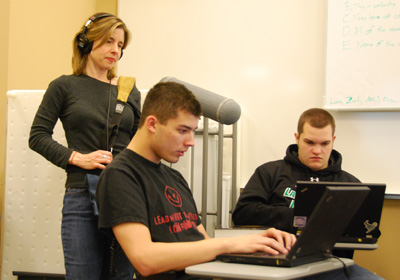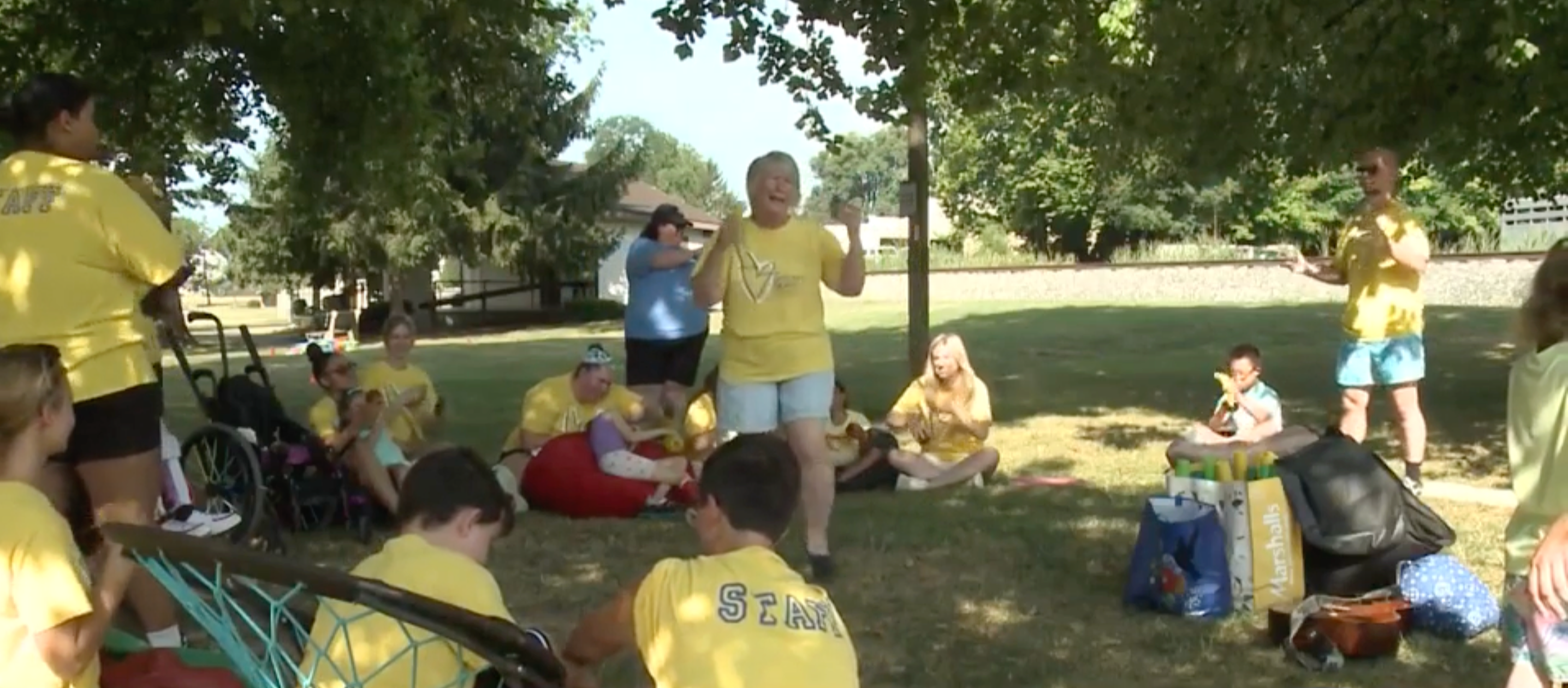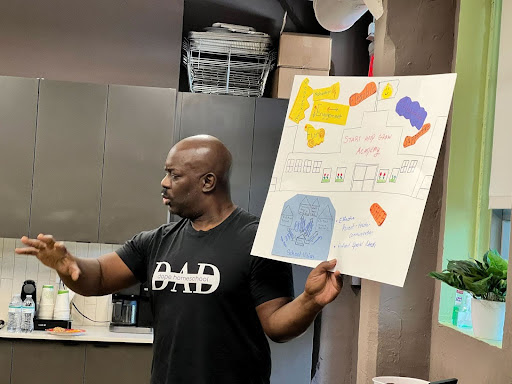Jump to: Top Tasks | From the Field | Key Resources | Moments of Resilience
It is week 138 of our new reality. Across the country, children are getting ready tonight for Halloween, which Scottish immigrants brought to America nearly two hundred years ago and has become a beloved tradition full of costumes, parties and, of course, candy.
As we have seen throughout the pandemic, having structures and rituals you can count on are crucial for all of us but especially for our children. And when you break those traditions, just getting back to normal can take a herculean effort.
One tradition we broke during the pandemic was the regular collection and release of student achievement results. Unfortunately, bureaucracies that would prefer to operate in the dark outside of the watchful eyes of the public, like the California and New York education departments, took advantage of these disruptions to announce that they wouldn’t release test score data before the elections. After a public outcry, they relented and then quietly put the data up on their websites on Oct. 24, the same day reporters were tied up analyzing NAEP data, perhaps hoping no one would notice.
SUBSCRIBE
The New York State Education Department further broke with tradition by releasing the data as a Microsoft Access database file, which makes it almost impossible for an ordinary citizen to get access to the results and understand how their local district and schools are performing.
Why go to all this trouble to obscure the results? Because the Empire State is failing its students. The newly released NAEP data–which is beyond the reach of state bureaucrats–shines a bright light on what is going on in New York schools:
-
- New York ranks 46th out of 50 states on the 4th grade math test, with an average scale score of 227. That means that students in the Empire State are nearly two grade levels behind their peers in Massachusetts (242) and Florida (241).
- New York has the fourth lowest ranking in the country for Hispanic students, with an average score of just 214. Black students in New York score even lower, with a scale score of just 212.
- Perhaps most concerning, New York was 48th out of 50 states in the size of the drop in student performance since 2019, with its 4th grade math students losing an average of 10 points or about one full grade level of learning. Only Virginia and Delaware saw bigger declines.
As we discuss below, the first step in helping students recover is to stop the spin and demand our leaders speak candidly about the facts. That’s a message that New York’s neighbor needs to hear as well. As Laura Waters points out, New Jersey is one of few remaining states that still hasn’t released its state data. “Where are the spring test scores? No one knows.”
The truth is the facts revealed by these tests can be hard to face but that makes it that much more important that we don’t look away. Looking at large districts, we find that the percentage of 4th graders scoring proficient on the NAEP math test is in single digits in Baltimore (7%), Cleveland (4%) and Detroit (3%). That means that on average less than one student in each 4th grade math class in the Motor City is able to do things like classify whole numbers as even or odd, subtract numbers with decimals or use a ruler to measure the length of an object.
But shining a spotlight on these stark realities only tells half the story. It’s just as important to focus on what this data reveals about what’s working. Perhaps the brightest spot of all in the 2022 NAEP results is the performance of Catholic schools.
“Today, the divergence between Catholic schools and public ones is so great that if all U.S. Catholic schools were a state, their 1.6 million students would rank first in the nation across the NAEP reading and math tests for fourth and eighth graders,” writes Kathleen Porter-Magee, who serves as superintendent of Partnership Schools which runs 11 Catholic schools in New York City and Cleveland, in an Op-Ed for the Wall Street Journal. (Full disclosure: the author is my wife, so I’ve followed this work closely.)
“When disaggregated by race, Catholic schools showed significant gains since 2019. In particular, achievement among black students enrolled in Catholic schools increased by 10 points (about an extra year’s worth of learning), while black students in public schools lost 5 points and black students in charter schools lost 8 points. Similarly, on the eighth-grade reading test, Hispanic students in Catholic schools gained 7 points while Hispanic students in public schools lost 1 point and Hispanic students in charter schools lost 2 points. Catholic schools lead the nation for Hispanic achievement on each of the four tests, and lead the nation in black student achievement on three of the four.”
Why were Catholic schools able to climb to the top of the rankings while district schools and charter schools lost so much ground? In part because in the fall of 2020 “more than 92% of Catholic schools across the country re-opened for in-person learning, compared with 43% of traditional public schools and 34% of charters.” The traditional focus of Catholic schools on rigorous curriculum, phonics, foundational knowledge, family engagement and safe and orderly classrooms likely also ensured that this extra in-person time was well spent.
It is an important reminder that learning losses during the pandemic were not inevitable. They were the result of the choices our leaders made. We have a responsibility to examine those decisions, encourage debate grounded in facts and use what we learn to help drive our educational recovery.
TOP TASKS
Insist every governor must be an education governor in 2023
“In light of this barometer of our kids’ success, there’s no time to waste to catch our kids up. We must continue to pour on the gas in our efforts,” Arizona Governor Doug Ducey said last Tuesday in response to the NAEP results. “We know our kids lost ground during the pandemic – it was not good for them. In Arizona, we kept schools open, made critical investments in literacy programs and launched a summer camp to prevent further learning loss. Another round of AZ OnTrack Summer camp is sorely needed for our kids. This is a community effort and we cannot afford for our kids to lose more ground next summer.”
Ducey, who declared his goal to be Arizona’s education governor during his first term, is certainly setting a high bar for the other 49. After increasing classroom funding and shepherding the nation’s most expansive school choice legislation into law, he became the first of America’s governors to respond to the NAEP results with specific promises, beginning with the return of the free “AZ OnTrack” summer camp initiative that was spearheaded by 50CAN board member Lisa Keegan.
Unfortunately, far from rising to the challenge, what we have gotten from many of his fellow governors across the country is silence.
Gubernatorial leadership starts with a commitment to wisely spend the federal ESSER dollars to support programming that’s been proven to raise student achievement and accelerate students to make up for lost learning. New research from the Urban Institute drives home this point, finding that districts that focused their spending on instruction had significantly higher performance than districts that focused their spending in other areas like facilities.
Last week, The Washington Post summed up the unacceptable current state of spending, writing: “The American Rescue Plan infused campuses with $122 billion to reopen buildings, address mental health needs and help students who had fallen behind academically. The need was so urgent that two-thirds of the money — $81 billion — was released less than two weeks after the plan was signed into law and before the Education Department could approve each state’s spending plan. But despite having access to the dollars, school systems throughout the country reported spending less than 15 percent of the federal funding.”
Readers of this newsletter are well-versed, at this point, with what we know will work:
-
- Expansive summer programming to provide as many students as possible with remedial and accelerated learning activities across the calendar year, from programs like AZ OnTrack and Summer Boost NYC.
- Small group or individualized tutoring, provided free of charge to any student who wants it. Accelerate founder Kevin Huffman has distributed $10 million across 28 states to launch and refine tutoring programs, TennesseeCAN and JerseyCAN have helped to secure legislative commitments to expand tutoring and Teach For America launched the Ignite Fellowship to place college students as tutors for underprivileged children.
- Curriculum shifts and professional development to support educators in teaching the science of reading which powered the Mississippi Miracle.
The question is no longer centered on what interventions will work but now whether state leaders have the political will and leadership acumen to enact them with the scale and urgency that is needed.
THE TASK OF THE WEEK IS
Stop the spin
The only thing more depressing than the facts revealed by the 2022 NAEP was the relentless attempt by so many to spin them away into a cloud of indifference. The game plan is clear: minimize or obfuscate the results whenever possible and in instances where it’s not, fight any attempt to draw conclusions that might require a change in the way our education system works.
“The 2022 National Assessment of Educational Progress results got released this week. I cannot stress the level to which I do not care,” writes Atlanta teacher Jay Wamsted in an op-ed for EdWeek.
“The hysteria over NAEP reflects our continued obsession with standardized testing, which began with the 2002 No Child Left Behind law and has shown no evidence of helping improve schools. The results …keep telling us what we already know,” writes Washington Post commentator Valerie Strauss.
“The Nation’s Report Card Shows Score Changes for Large City School Districts Mirror National Trends,” announced the headline of a press release for the Council of the Great City Schools, ignoring the enormous problems the NAEP revealed in their districts.
Here’s AFT President Randi Weingarten’s reaction to the results, which sidesteps her own role in keeping schools closed far longer than peer countries: “Thankfully, after two years of an unprecedented economic, educational and social disruption, we have the tools, vaccines and treatments to deal with COVID-19 and re-establish a sense of normalcy in schools.”
“This was to be expected. It was the price for keeping as many teachers, school workers, children and their families alive,” wrote former NAACP Legal Defense Fund President Sherrilyn Ifill.
And labor activist and podcaster Jack Schneider: “My two cents: the fact that scores didn’t drop even further is a testament to educators, young people, and families. People did the best they could in an once-in-a-century global health crisis.”
“What is the panic about pandemic learning loss actually about?” asks David Wallace-Wells in The New York Times, while Jay Caspian Kang concludes in a piece for The New Yorker that the real problem is not learning loss but “parental anxiety” about that loss.
It’s time to say: Stop. Just stop.
Our kids deserve better. We need less cant and more candor. We need less spin and more substance. We need leadership with integrity and accountability at the core.
THE TASK OF THE WEEK IS
FROM THE FIELD
Executive Directors at the 50CAN network met virtually twice this week to examine NAEP results, weigh the benefits of a variety of intervention strategies and to share context behind the results in their states. We share a few of their reactions with you today:
“I was prepared for our NAEP results to show what we all know to be true, which is that our students, especially our students that need us the most, suffered over the course of the last two years – and for decades before. But I wasn’t prepared for the reality of New Mexico’s results: 50th in every category. To have colleagues from across the country text me to say, ‘Wow, your results are heartbreaking’ was especially tough to swallow. We cannot and will not allow this failure to continue. NewMexicoKidsCAN is more committed than ever to bring our community together to say ‘enough, is enough.’ This will be the final time we’re last.” –Amanda Aragon, NewMexicoKidsCAN
“Colorado’s NAEP results put our state solidly in the middle of the pack but when you dig into the specific subgroups of students, it’s clear we have an enormous problem. At the state and district level, the gaps between students of color and their white peers has grown dramatically. It’s clear the most marginalized bore the biggest burden over the last two years and we owe it to our students to act decisively and not settle for a ‘back to normal’ approach.” -Nicholas Martinez, Transform Education Now
“We need urgent and immediate interventions in Tennessee, including doubling down on universal adoption of our state’s investment in high-quality, high-dosage tutoring for districts and schools that need additional support. The future leaders of our state and nation are in our classrooms, and it is in our collective interest to ensure that they have the resources and supports that they need to be successful both in the classroom and in life.” -Victor J. Evans, TennesseeCAN
“While we expected a drop in proficiency rates we didn’t anticipate just how far Delaware students had fallen in reading and math proficiency. The large gaps point to problems that persisted long before the pandemic. We can get our students back on track but not without targeted solutions from leadership who must pledge to respond with urgency.” -Britney Mumford, DelawareCAN
Key Resources
Brookings looks at the methods large urban districts are using to recruit and retain educators and other staff members, finding an emphasis on expanding training, professional development and support.
The 74 Million examines how prevalent various learning recovery strategies–including tutoring–are across the country, finding that only 20% of large, urban districts are taking a comprehensive approach.
Chalkbeat profiles Kevin Huffman’s Accelerate and the effort to research the best practices for tutoring that will effectively raise student achievement at scale.
Laura Waters of NJ Education Report asks why New Jersey’s students accumulated more learning loss than almost any other state. Her theory: a failure at implementing timely and effective interventions.
Stanford’s Educational Opportunity Project constructed the first nationwide database of academic results, including preliminary results at the district level for 29 states in 2022.
Harvard has a new report out on the long-term economic impact of learning loss, indicating that pandemic-era policy choices will result in a loss of $900 billion in American wealth for the generation currently in the K-12 system.
Urban Institute digs into how Rhode Island is spending their federal education stimulus dollars, finding that investments in instruction resulted in more student learning than investments in infrastructure.
FutureEd looks at proficiency changes in state assessment scores across the country and how they match up with state-level NAEP results, a helpful companion resource to accompany the 2022 NAEP data.
Watershed Advisors provides one of the more helpful data visualizations when considering NAEP scores: a state-by-state ranking of the shifts in scores.
Fordham Institute’s Mike Petrilli reflects on the disappointing results from urban charter schools in the wake of the pandemic.
Moment of Resilience

Journalist Emily Hanford of APM Reports records students as they tackle work in a biology classroom. A recipient of AERA’s Excellence in Media Reporting on Educational Research award, Hanford’s new podcast Sold a Story: How Teaching Kids to Read Went So Wrong premiered in the top 20 of American podcasts. Focused on the problems, causes and solutions behind the country’s literacy crisis, the podcast is an introduction for the masses to the science of reading, the phonics-based approach that both Mississippi and Tennessee point to as being a critical factor in recovering from the lost learning of the pandemic.







